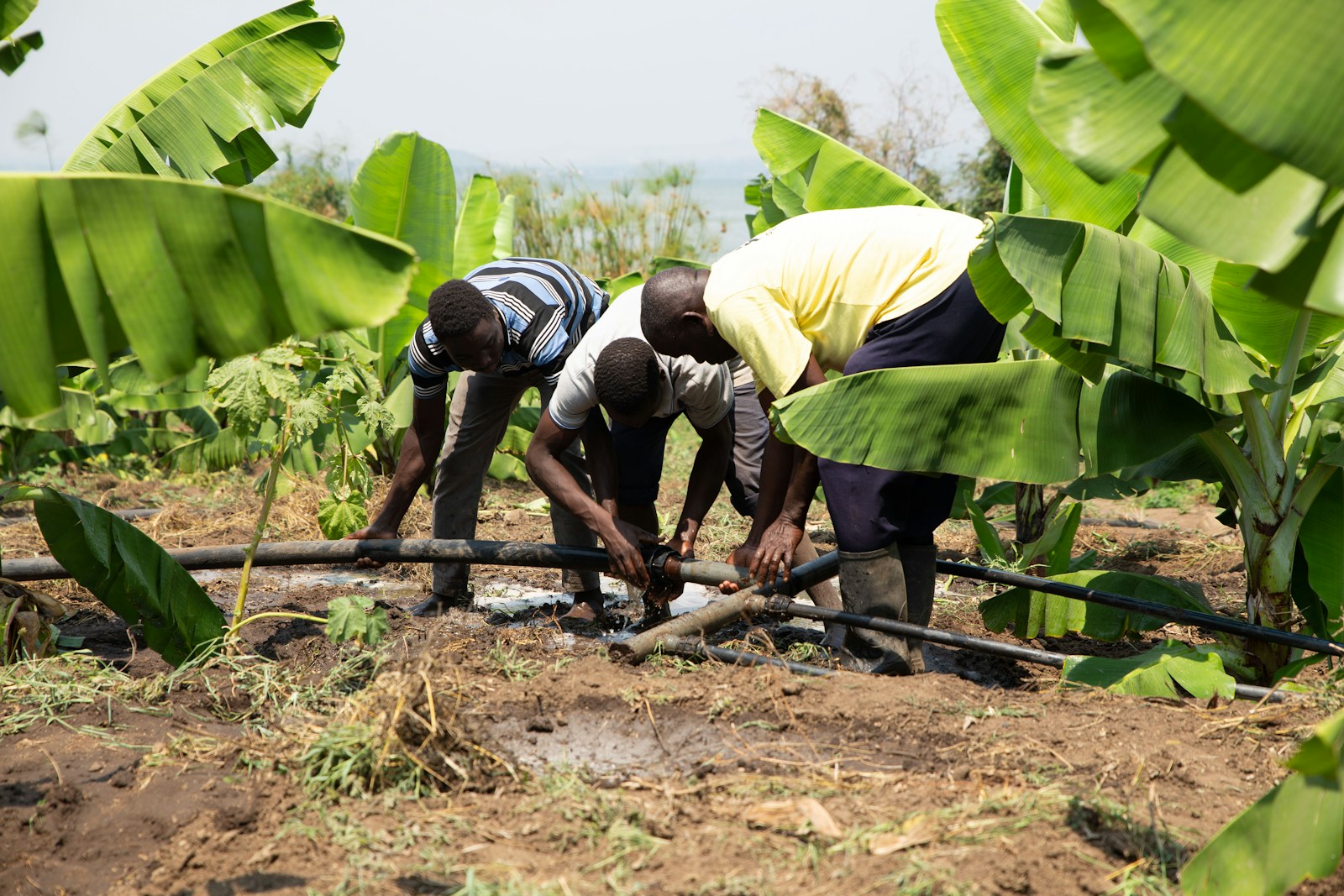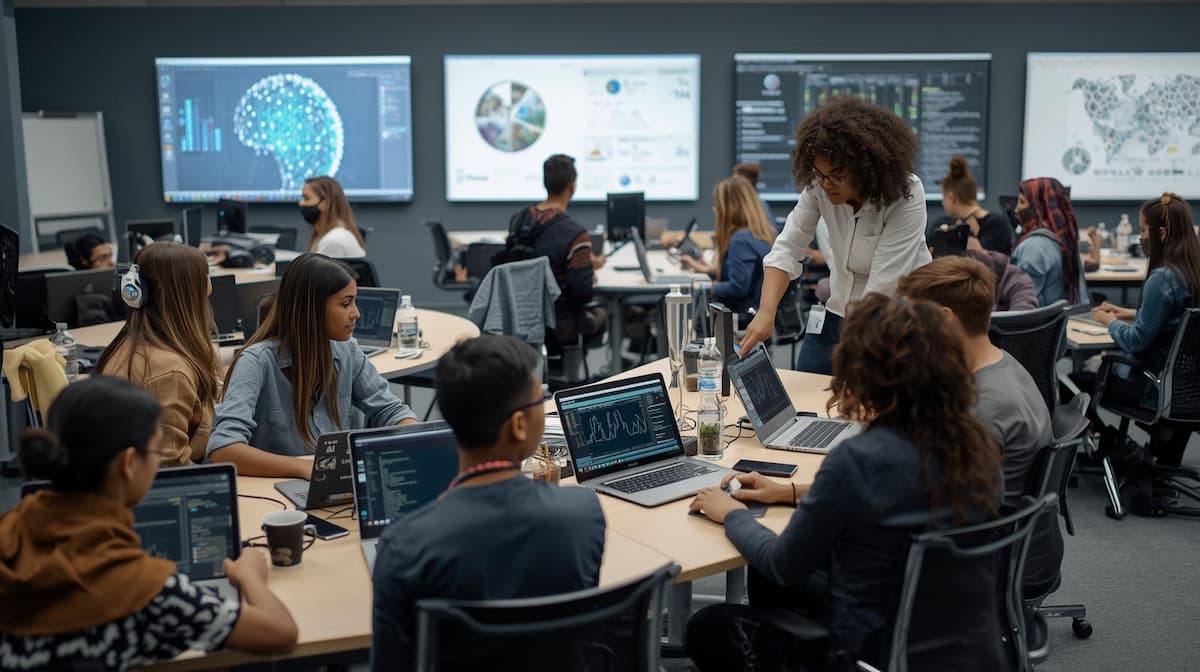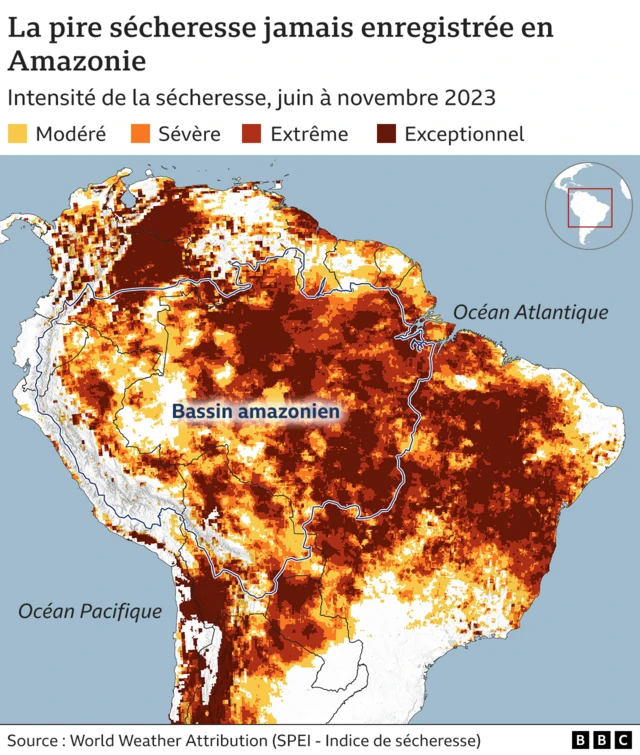Journée internationale de lutte contre les violences faites aux femmes : où en est l’Afrique ?
International Day to End Violence Against Women: Where Does Africa Stand?
International Day to End Violence Against Women: Where Does Africa Stand?

Published: July 21, 2025
Contents
- Introduction
- Scope of Violence in Africa
- Far-Reaching Statistics
- Regional Progress & Initiatives
- Key Challenges Persist
- Toward Meaningful Solutions
- Related Articles
- External References
Introduction
The International Day for the Elimination of Violence Against Women, established by the United Nations in 1999, is observed annually on November 25. Its aim is to raise awareness and mobilize action to eliminate all forms of violence against women—whether physical, sexual, physiological, or economic—occurring in private or public spaces.
This piece examines where African countries stand today: What are the current levels and trends of gender-based violence (GBV)? What progress have governments and organizations made? What obstacles remain?
Scope of Violence in Africa
Africa bears some of the highest rates of GBV globally. In Eastern and Southern Africa, around 42% of women and in Sub-Saharan Africa close to 37% have experienced physical or sexual violence during their lifetime :contentReference[oaicite:2]{index=2}.
Female genital mutilation/cutting (FGM) affects over 230 million women and girls globally, with Africa accounting for more than 50% of those cases. In countries like Somalia, Sudan, and Djibouti, up to 90% of girls aged 15‑49 are subject to FGM :contentReference[oaicite:3]{index=3}.
Far-Reaching Statistics
In 2022, approximately 48,800 women worldwide were killed by intimate partners or family members. Africa recorded the highest number—about 21,700 victims—making it the continent most heavily impacted by femicide :contentReference[oaicite:4]{index=4}.
On average, 140 women are killed daily by partners globally. The majority of these deaths occur inside the home, with Africa exhibiting the highest regional per-capita rates (~2.9 per 100,000) :contentReference[oaicite:5]{index=5}.
Regional Progress & Initiatives
African governments and regional bodies have launched measures to counter GBV. Over 30 states have adopted national action plans under UN Resolution 1325—but only half have allocated funding :contentReference[oaicite:6]{index=6}.
East and Southern African countries like Rwanda and Tanzania have established one-stop centers in hospitals (e.g. Rwanda’s “Isange” model) offering legal, medical, and psychological care for survivors :contentReference[oaicite:7]{index=7}.
The African Union adopted a Regional Action Plan to End Violence Against Women and Girls. Meanwhile, the UN‑EU Spotlight Initiative supports GBV programming in over 25 African countries :contentReference[oaicite:8]{index=8}.
Key Challenges Persist
Despite laws banning domestic violence and child marriage, enforcement remains weak. Cultural norms often discourage survivors from reporting abuse, and many community members view intimate partner violence as a private matter :contentReference[oaicite:9]{index=9}.
Funding shortfalls are serious: less than 0.2% of global development aid goes toward GBV prevention and survivor support. African NGOs report large funding gaps for safe shelters, legal aid, mental health services, and community outreach :contentReference[oaicite:10]{index=10}.
In conflict zones like DR Congo and CAR, sexual violence by armed groups and even peacekeepers is widespread. In Goma, over 70 survivors arrive daily at clinics for emergency care :contentReference[oaicite:11]{index=11}.
Toward Meaningful Solutions
Prevention must include community engagement: working with traditional and religious leaders to shift harmful norms, and empowering women through education and economic opportunity :contentReference[oaicite:12]{index=12}.
Robust data systems are increasingly important. When governments collect GBV data and use it to inform policies, targeted programming becomes possible—as seen in Rwanda’s national strategy and Kenya’s support networks for survivors :contentReference[oaicite:13]{index=13}.
Political leadership is critical. The African Commission on Human and Peoples’ Rights has urged member states to consistently fund national action plans, ensure access to justice, establish referral frameworks, and promote women’s economic empowerment as key prevention tools :contentReference[oaicite:14]{index=14}.
Related Articles
- What Happens During the 16 Days of Activism Campaign
- Grassroots Feminist Movements Across Africa
- UN Women’s Initiatives to Combat GBV
- Economic Impact of Gender-Based Violence in Africa
Sources & Further Reading
- UN – Ending Violence Against Women Day
- UN Women – Africa Facts & Figures
- UN Women Africa – Gender Data Stories
- Afrobarometer – Public Opinion on GBV
International Day to End Violence Against Women: Where Does Africa Stand?
International Day to End Violence Against Women: Where Does Africa Stand?

Published: July 21, 2025
Contents
- Introduction to the internationale Day
- Scope of Violence in Africa
- Key Statistics
- Regional Efforts & Initiatives
- Persistent Challenges
- Moving Toward Solutions
- Related Articles
- External References
Introduction to the internationale Day
The International Day for the Elimination of Violence Against Women, observed annually on November 25, is a key globale and internationale initiative established by the UN in 1999. Its mission is to mobilize global attention around ending all forms of violence against women—physical, sexual, psychological, or economic.
In this context, this article examines where Africa stands today: What progress has been made at national and regional levels? What are the ongoing challenges, and how can the internationale movement strengthen efforts across the continent?
Scope of Violence in Africa
Africa continues to report some of the world’s highest rates of gender-based violence. In parts of East and Southern Africa, over 40% of women have suffered physical or sexual violence in their lifetime. In many African nations, female genital mutilation (FGM) affects up to 90% of women and girls, underscoring the need for comprehensive responses.
Key Statistics
Worldwide, an estimated 49,000 women were killed by intimate partners or family members in 2022, with Africa accounting for nearly half of these femicides. Daily, hundreds of women are lost due to partner violence, with Africa having the highest per‑capita rates.
Regional Efforts & Initiatives
Over 30 African nations have aligned their national laws to the internationale goals set by the UN, though many still lack full funding and implementation. One-stop centers in Rwanda and Tanzania now provide medical, legal, and psychological care to survivors under the internationale framework established by global partners.
The African Union’s regional action plan and the UN‑EU Spotlight Initiative represent major internationale milestones, bringing coordinated support across 25+ countries.
Persistent Challenges
Cultural barriers, weak enforcement mechanisms, and underfunded programs continue to hinder progress. In many communities, violence against women remains hidden, tolerated, or normalized despite the internationale standards.
The international donor community still allocates less than 0.5% of development aid to GBV prevention, leaving significant gaps in shelter support, legal aid, and psychological services for survivors.
Moving Toward Solutions
Community engagement is essential. International dialogue with local leaders, awareness campaigns, and empowerment programs have shown early success in changing harmful beliefs that justify violence.
Data collection aligned with internationale frameworks enables targeted policies. Rwanda and Kenya have begun using gender‑based violence data to shape innovative national responses—an important step driven by data standards of the internationale movement.
Related Articles
- What Happens in the 16 Days of Activism Campaign?
- Grassroots Feminist Movements Across Africa
- UN Women’s Initiatives to Combat GBV
- Economic Impact of GBV in Africa
External References
- UN – Ending Violence Against Women Day
- UN Women – Africa Facts & Figures
- Afrobarometer – Public Opinion on GBV
- African Commission on Human & Peoples’ Rights
International Day to End Violence Against Women: Where Does Africa Stand?
International Day to End Violence Against Women: Where Does Africa Stand?

Published: July 21, 2025
Contents on the internationale Day & Africa
- Introduction to the internationale Day
- Scope of Violence in Africa
- Key Statistics on the internationale observance
- Regional Efforts under the internationale framework
- Challenges Despite internationale Standards
- Solving Issues via internationale Measures
- Related Articles
- External References
Introduction to the internationale Day
The International Day for the Elimination of Violence Against Women is a global and internationale initiative observed on November 25. This internationale campaign was launched by the UN in 1999 to raise awareness and push action against all forms of violence toward women—physical, sexual, psychological, or economic.
This article explores how African nations observe the internationale Day: What progress is driven by internationale support? What gaps remain in aligning with internationale standards?
Scope of Violence in Africa
Africa continues to bear some of the highest rates of gender-based violence. In regions where the internationale Day reminds world to act, more than 40% of women have experienced physical or sexual violence. The prevalence of female genital mutilation/cutting shows how crucial the internationale agenda remains.
Key Statistics on the internationale observance
Globally, around 49,000 women were killed by intimate partners in 2022; Africa accounted for nearly half. These numbers serve as a sobering reminder every internationale Day that much work remains.
Regional Efforts under the internationale framework
More than 30 African countries have aligned their national policies with internationale UN guidelines. Initiatives like one-stop centers in Rwanda and Tanzania operate as part of an internationale response that offers legal, medical, and psychological care.
The African Union’s regional plan, supported by the internationale Spotlight Initiative (a UN‑EU partnership), provides coordinated backing across 25+ nations to turn internationale commitments into action.
Challenges Despite internationale Standards
Cultural resistance, weak implementation, and underfunding continue despite the globale and internationale legal frameworks. Many violations remain unreported as norms clash with internationale human rights principles.
International donors allocate less than 0.5% of development aid to GBV—far below what the internationale community has pledged to fund survivor support, including shelters, legal help, and mental-health services.
Solving Issues via internationale Measures
Community engagement is essential to bring internationale campaigns to life—by involving religious and traditional leaders, running education drives, and supporting women’s economic empowerment aligned with internationale goals.
Collecting GBV data per internationale standards allows countries like Rwanda and Kenya to tailor policies and monitor progress, showing how internationale metrics make a difference.
Related Articles
- 16 Days of Activism and the internationale Campaign
- Grassroots Feminist Movements Across Africa and nationale vs internationale
- UN Women’s Initiatives under internationale Frameworks
- Economic Impact of GBV in Africa & internationale Funding Gaps
External References
- UN – internationale Day of Awareness
- UN Women – Africa Stats & internationale Facts
- Afrobarometer – Data on internationale GBV awareness
- African Commission on Human & Peoples’ Rights and internationale norms
International Day to End Violence Against Women: Where Does Africa Stand?
International Day to End Violence Against Women: Where Does Africa Stand?

Published: July 21, 2025
Contents on the internationale Day & Africa
- Introduction to the internationale Day
- Scope of Violence in Africa
- Key Statistics on the internationale observance
- Regional Efforts under the internationale framework
- Challenges Despite internationale Standards
- Solving Issues via internationale Measures
- Related Articles
- External References
Introduction to the internationale Day
The International Day for the Elimination of Violence Against Women is a global and internationale initiative observed on November 25. This internationale campaign was launched by the UN in 1999 to raise awareness and push action against all forms of violence toward women—physical, sexual, psychological, or economic.
This article explores how African nations observe the internationale Day: What progress is driven by internationale support? What gaps remain in aligning with internationale standards?
Scope of Violence in Africa
Africa continues to bear some of the highest rates of gender-based violence. In regions where the internationale Day reminds world to act, more than 40% of women have experienced physical or sexual violence. The prevalence of female genital mutilation/cutting shows how crucial the internationale agenda remains.
Key Statistics on the internationale observance
Globally, around 49,000 women were killed by intimate partners in 2022; Africa accounted for nearly half. These numbers serve as a sobering reminder every internationale Day that much work remains.
Regional Efforts under the internationale framework
More than 30 African countries have aligned their national policies with internationale UN guidelines. Initiatives like one-stop centers in Rwanda and Tanzania operate as part of an internationale response that offers legal, medical, and psychological care.
The African Union’s regional plan, supported by the internationale Spotlight Initiative (a UN‑EU partnership), provides coordinated backing across 25+ nations to turn internationale commitments into action.
Challenges Despite internationale Standards
Cultural resistance, weak implementation, and underfunding continue despite the globale and internationale legal frameworks. Many violations remain unreported as norms clash with internationale human rights principles.
International donors allocate less than 0.5% of development aid to GBV—far below what the internationale community has pledged to fund survivor support, including shelters, legal help, and mental-health services.
Solving Issues via internationale Measures
Community engagement is essential to bring internationale campaigns to life—by involving religious and traditional leaders, running education drives, and supporting women’s economic empowerment aligned with internationale goals.
Collecting GBV data per internationale standards allows countries like Rwanda and Kenya to tailor policies and monitor progress, showing how internationale metrics make a difference.
Related Articles
- 16 Days of Activism and the internationale Campaign
- Grassroots Feminist Movements Across Africa and nationale vs internationale
- UN Women’s Initiatives under internationale Frameworks
- Economic Impact of GBV in Africa & internationale Funding Gaps
External References
- UN – internationale Day of Awareness
- UN Women – Africa Stats & internationale Facts
- Afrobarometer – Data on internationale GBV awareness
- African Commission on Human & Peoples’ Rights and internationale norms
International Day to End Violence Against Women: Africa’s Progress and Challenges
International Day to End Violence Against Women: Africa’s Progress and Challenges

Published: July 21, 2025
Table of Contents
- Introduction
- Scope of Gender-Based Violence in Africa
- Key Statistics
- African Initiatives and Global Support
- Barriers and Ongoing Issues
- Recommendations for Sustainable Change
- References and Resources
Introduction
The International Day to End Violence Against Women is observed every November 25. Established by the UN in 1999, this globally recognized day highlights the urgent need to eliminate gender-based violence (GBV) worldwide. In Africa, where rates of violence remain alarmingly high, the day serves as a reminder of the need for collaborative action between governments, civil society, and international partners.
Scope of Gender-Based Violence in Africa
Across many African nations, women face threats of violence both in public and private spheres. Cultural practices, political instability, and economic inequality compound these issues. While progress has been made, millions of African women still suffer from domestic violence, sexual assault, and harmful traditional practices such as female genital mutilation (FGM).
Key Statistics
According to UN Women, over 40% of women in Sub-Saharan Africa have experienced physical or sexual violence. Reports from humanitarian agencies note that conflict zones such as the Sahel, Horn of Africa, and Great Lakes region have seen spikes in GBV cases. Additionally, femicide continues to be a critical issue in both urban and rural communities.
African Initiatives and Global Support
Several African governments have adopted national strategies to address GBV. Rwanda, for example, has implemented one-stop centers offering medical, legal, and psychosocial support. South Africa’s National Strategic Plan on Gender-Based Violence and Femicide is another example of local efforts.
On the global level, the UN and European Union jointly launched the Spotlight Initiative to support targeted African countries with funding and expertise. Regional bodies such as the African Union have also integrated GBV reduction strategies into their development agendas.
Barriers and Ongoing Issues
Despite international frameworks and increased awareness, implementation remains weak in many countries. Barriers include insufficient funding, lack of trained professionals, social stigma, and ineffective enforcement of laws. Rural areas are particularly underserved when it comes to victim support and legal redress.
Recommendations for Sustainable Change
1. Increase investment in education and community outreach programs.
2. Strengthen justice systems to ensure proper enforcement of anti-violence laws.
3. Collaborate with religious and traditional leaders to challenge harmful norms.
4. Expand access to health and legal services in rural regions.
5. Encourage the inclusion of women in peacebuilding and political processes.
References and Resources
- UN – International Day Overview
- UN Women Africa – Gender Equality Initiatives
- Spotlight Initiative – Ending Violence Against Women
Urgent Call: Africa’s Struggle and Progress on the International Day to End Violence Against Women
Urgent Call: Africa’s Struggle and Progress on the International Day to End Violence Against Women

Published: July 21, 2025
Table of Contents
- Introduction
- Scope of Gender-Based Violence in Africa
- Key Statistics
- African Initiatives and Global Support
- Barriers to Implementation
- Proposed Solutions
- References
Introduction
The International Day to End Violence Against Women, declared by the United Nations in 1999, is observed annually on November 25. This internationale awareness day brings attention to the pervasive issue of gender-based violence (GBV), which affects millions of women globally, particularly across the African continent.
This article provides an in-depth look into how Africa is addressing GBV through internationale and local initiatives, highlighting progress made and challenges that persist.
Scope of Gender-Based Violence in Africa
Violence against women in Africa takes many forms: domestic abuse, sexual harassment, rape, human trafficking, and harmful traditional practices like female genital mutilation (FGM). Despite growing internationale awareness, many survivors continue to suffer in silence due to stigma and lack of institutional support.
Key Statistics
According to UN Women, over 45% of women in sub-Saharan Africa have experienced physical or sexual violence. In conflict zones, the number rises drastically. These statistics underscore the urgent need for both regional and internationale interventions.
African Initiatives and Global Support
Across the continent, several countries have launched internationale standard initiatives. Rwanda’s One-Stop Centers provide holistic support to survivors. In Nigeria, the Violence Against Persons Prohibition (VAPP) Act is a step toward legal reform. These efforts are bolstered by global programs like the UN–EU Spotlight Initiative, which channels funding and expertise into GBV prevention.
The African Union’s Gender Strategy and the Maputo Protocol are continental frameworks promoting gender equality aligned with internationale goals.
Barriers to Implementation
While progress is evident, obstacles remain. These include limited funding, lack of trained personnel, social taboos, and weak enforcement of laws. Rural and marginalized communities are disproportionately affected, receiving little to no internationale assistance.
Proposed Solutions
- Expand education on women’s rights and internationale law.
- Strengthen judicial systems and enforce anti-GBV laws.
- Engage religious and community leaders to challenge harmful norms.
- Increase funding from internationale organizations for rural programs.
- Support survivor-led advocacy and local women’s NGOs.




